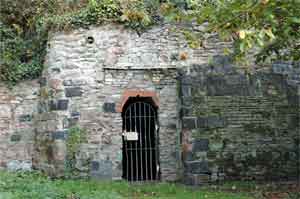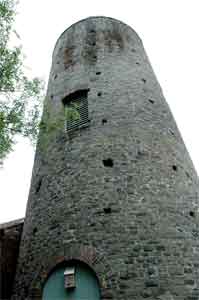 |
|
     |
|
WarmleyA Brief HistoryWilliam Champion (1709-89) and his partners established the Warmley brass works in 1746 at a spot beside the Siston Brook, after Champion had been dismissed from the Bristol Brass Company. The works produced wire, pins and utensils made of copper and brass, with all the processes from ore smelting to the manufacture of the finished articles being located on a single site. The copper ore came from Cornwall, zinc ore from the Mendips and the coal was mined locally. William Champion had patented a process in 1738 for producing zinc metal from the ore calamine, and used it at Warmley. The ore was heated in retorts, driving off the zinc as a gas. It was then recovered by condensation. This is said to be the first instance of zinc metal being produced commercially in Europe, though both the Chinese and Indian metallurgists had already mastered the art. The Champion, or English, process remained the only process for the production of zinc in the West until the development of the horizontal retort process in Belgium at the start of the 19th Century. The metallurgy of the processes is described in Cocks and Walters (p.6-9). There are few contemporary descriptions of the works, due to the secrecy imposed by Champion. However two Swedish industrial spies have left accounts. The first, Reinhold Angerstein, noted in 1754 that there were a total of 37 furnaces for copper, brass and zinc, and well as plate and wire mills. The second was Bengt Ferrner in 1760. By 1761 the works had been expanded, and included a windmill for ore treatment and more furnaces. The partners had also built some houses and tenements for key workers. William Champion supervised operations from the nearby Warmley House, which probably dates from the middle of the 18th Century. In 1767 the company ran into financial difficulties over an expansion. Champion was dismissed by his partners, declared bankrupt, and the works were purchased by the Bristol Brass Company. In 1787 that company ran into difficulties and was bought by some of the original partners. Zinc smelting continued until 1880 under a variety of companies, before the site was put to other uses, such as the manufacture of pottery.
The whole site is now a conservation area, with fragmented ownership of the land. In the 1990s the City of Hereford Archaeology Unit produced a report on the archaeology of the whole site for English Heritage. Champion�s house is Grade II* listed, and is a nursing home. The windmill and associated buildings are now the Kingswood Heritage Museum. The Clock Tower, which had been used for the manufacture of pins, is now used for community purposes. The remaining buildings of the Champion era have been demolished during the redevelopment of the area. Photo right: Grotto at Warmley. Photo by M Adams ImportanceAs well as being the site of the early production of zinc metal, Warmley is the only remaining 18th Century industrial complex that covered all stages of metal working, from the smelting of ores to the production of finished articles. It has been identified as *** (3 star), the highest category in the classification of the Monuments Protection Programme, in recognition of the national historic significance of the site. RestorationThe AIBT was appointed to lead a Warmley Project Executive group, which had the task of conserving and developing the site. It organised a workshop in the middle of 2008, bringing together a number of interested parties. In 2010 two members of the AIBT joined the trustees of an existing local charity, which was subsequently renamed Kingswood Heritage Projects. KHP took over the task of steering the project until it withdrew in 2015. The AIBT is no longer associated with this project. Location
Most of the site is on private land, in the north-east corner of grid square ST6672. The southern boundary of the present site lies along Tower Lane, and the eastern boundary runs along Tower Road North. The nearest bus service runs along Tower Road North. Further InformationPhoto right: Tower at Warmley. Photo by M Adams Warmley Conservation Area � Advice Note 30 Kingswood Heritage Museum http://www.kingswoodmuseum.org.uk/ South Gloucestershire Council http://www.southglos.gov.uk/ Page updated 10 Jul 19 |
|
| [email protected] | |

